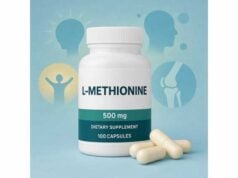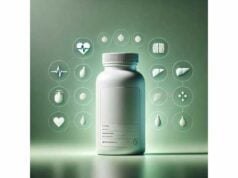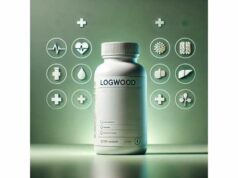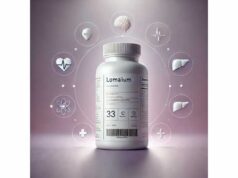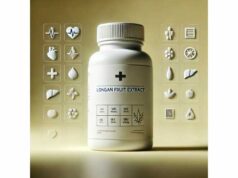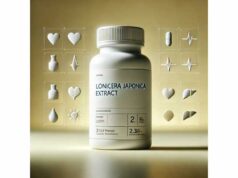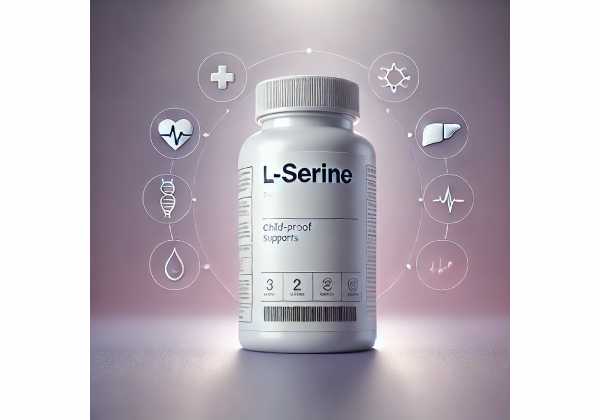
L-serine is a nonessential—yet often conditionally essential—amino acid that sits at the crossroads of protein synthesis, cell membranes, and one-carbon metabolism. Your body makes L-serine from glucose, but demand rises during growth, injury repair, neuroinflammation, and high training loads. In nutrition and clinical research, L-serine has drawn attention for three reasons: (1) it feeds phosphatidylserine and sphingolipid production that helps neurons maintain membranes and myelin; (2) it fuels the folate/one-carbon cycle, supporting nucleotide synthesis and methylation; and (3) at higher, protocolized doses it can lower atypical deoxysphingolipids, an effect used therapeutically in rare neuropathies. People consider L-serine for cognitive support, neurological protocols, metabolic resilience, or simply to round out protein intake in plant-forward diets. This guide explains what L-serine does, where evidence is strongest, how to choose a form and dose that fits your goal, what risks to watch for, and how to use it alongside diet and lifestyle basics for measurable results.
Quick Overview
- Supports membrane lipids, myelin, and one-carbon metabolism; studied in hereditary sensory neuropathy and exploratory ALS protocols.
- Typical wellness range: 500–3,000 mg/day; clinical protocols may use 5–30 g/day under supervision.
- Generally well tolerated; main issues are gastrointestinal upset at high doses and theoretical interactions with certain drugs.
- Avoid unsupervised high-dose use in kidney or liver disease, during pregnancy, or if you are on complex neurological regimens—work with a clinician.
Table of Contents
- What is L-serine and how it works
- Where it may help: benefits that matter
- How to use L-serine smartly
- Dosage and timing by goal
- Safety, side effects, who should avoid
- Evidence strengths and gaps
What is L-serine and how it works
L-serine is one of the twenty amino acids used to make proteins, yet its reach extends far beyond bulk protein needs. Biochemically, L-serine occupies a hub position:
- Membrane and myelin building: L-serine combines with activated lipids to form phosphatidylserine and is required for sphingolipid synthesis. Healthy neuronal membranes, synapses, and myelin sheaths depend on these lipids. A shortage of L-serine or a shift in pathway flux can alter the balance of sphingolipids that protect axons.
- One-carbon metabolism: Through serine hydroxymethyltransferase, L-serine donates one-carbon units to tetrahydrofolate, supporting nucleotide synthesis (DNA/RNA) and methylation reactions. This is why tissues with rapid turnover—immune cells, healing wounds, training-adapted muscle—often have higher serine demand.
- Energy and redox: L-serine metabolism touches NAD+/NADH balance and mitochondrial function; adequate serine helps cells manage oxidative stress and sustain anabolic work.
Your body can synthesize L-serine from 3-phosphoglycerate (a glycolysis intermediate), but capacity is finite. Intake from food thus matters when demand rises. Diets rich in eggs, meat, fish, dairy, soy, legumes, nuts, and seeds provide L-serine; omnivores usually exceed basal needs, while strictly plant-based eaters may meet needs through total protein but sometimes supplement to support specific goals.
L- vs D-serine: Supplements may list L-serine (the protein-building form) or D-serine (a neuromodulator acting at NMDA receptors). This guide focuses on L-serine. Do not substitute D-serine for L-serine protocols unless a clinician specifically prescribes it; dosing, actions, and safety differ.
Why clinicians care:
- In hereditary sensory and autonomic neuropathy type 1 (HSAN1), a mutation diverts sphingolipid synthesis toward toxic deoxysphingolipids. High-dose L-serine can dilute this pathway and lower those toxins, slowing nerve damage in trials.
- In amyotrophic lateral sclerosis (ALS) and other neurodegenerative contexts, L-serine has been explored for membrane support, glial modulation, and potential neuroprotection.
- In general wellness, L-serine may support cognitive stamina (via membrane turnover and one-carbon support), recovery from heavy training, and skin barrier integrity—when paired with adequate total protein, omega-3s, and micronutrients.
Think of L-serine as a materials and signaling substrate. It feeds the factory that maintains membranes and genetic material while intersecting with energy and redox control. That versatility underlies many of the use-cases you’ll see below.
Where it may help: benefits that matter
1) Peripheral nerve protection in HSAN1 (strongest clinical signal).
In HSAN1, mutations in serine palmitoyltransferase cause the enzyme to incorporate alanine instead of serine, generating deoxysphingolipids that injure sensory axons. High-dose oral L-serine reduces production of these toxins in humans and mice and, in a randomized clinical trial, slowed disease progression. For the small group of people with HSAN1, this is a meaningful disease-modifying approach. While rare, it illustrates a principle: supplying abundant L-serine can re-route lipid chemistry toward safer outputs.
2) Exploratory neuroprotection (ALS and neurotoxin models).
Phase I work in ALS patients shows good tolerability across escalating twice-daily doses (up to the high grams). Some exploratory analyses suggested slower functional decline in small subgroups, and mechanistic studies in primate neurotoxin models report reduced pathological changes when L-serine is co-administered. These data are preliminary but justify ongoing research. If you or a loved one is considering L-serine for ALS, treat it as a clinician-directed adjunct, not a replacement for standard care.
3) Cognitive and mental energy support (indirect but plausible).
In healthy adults, cognitive effects from L-serine alone are subtle. However, because L-serine feeds phosphatidylserine, sphingomyelin, and one-carbon pathways, it contributes to the infrastructure that underlies attention, learning, and recovery from cognitive load. Practical reports are most favorable when L-serine is embedded in an overall nutrition pattern: sufficient protein, omega-3s, B-vitamins (folate/B12), choline, and sleep. Expect incremental benefits rather than a stimulant-like effect.
4) Muscle recovery, skin, and barrier tissues (supportive role).
High-load training, wound healing, and skin turnover increase demand for amino acids and one-carbon units. L-serine can help keep collagen synthesis, membrane turnover, and keratinocyte proliferation on track—again, provided the fundamentals are in place: adequate protein (≈1.2–1.6 g/kg/day during training or recovery), vitamin C, zinc, and overall energy sufficiency. For skin barrier support, L-serine works best alongside ceramide-friendly fats and gentle topical care.
5) Metabolic and methylation balance (systems level).
L-serine’s one-carbon role buttresses DNA/RNA synthesis and SAM-dependent methylation. This matters during growth, immune activation, or any state with rapid cell turnover. If your diet is low in glycine/serine-rich proteins and leafy greens/legumes (folate), a modest L-serine supplement can reduce bottlenecks in these pathways.
What not to expect: L-serine is not a quick mood booster, fat burner, or sleep aid. Benefits are structural and metabolic; they accrue over weeks to months and are most noticeable when paired with targeted rehab, training, or clinical protocols.
How to use L-serine smartly
Start with your goal and your baseline.
If you eat adequate protein and you’re generally healthy, you may not need an L-serine supplement for everyday life. Consider it when you have a defined objective: supporting a neurological care plan, filling a dietary gap in a plant-forward pattern, or reinforcing recovery during intensive training or wound care (under clinical guidance).
Choose the right form.
- L-serine (free form): precise dosing, mixes easily in water or smoothies, neutral taste.
- Protein-based approach: some people prefer to increase whole-food protein or use blends that also supply glycine, alanine, and glutamine.
- Do not confuse with D-serine: different actions, different safety.
Layer L-serine into a complete plan.
- For neurological goals: Coordinate with your neurologist. If approved, pair L-serine with fundamentals: omega-3s (EPA/DHA), B-vitamins (especially folate and B12 for one-carbon flow), exercise as tolerated, and sleep optimization.
- For training/rehab: Emphasize total protein and collagen plus vitamin C for connective tissue; use L-serine to support membrane and methylation needs, not as a stand-alone ergogenic.
- For skin/barrier: Nutrition first (protein, essential fats, micronutrients). Topically, favor gentle cleansers, daily sunscreen, and barrier-supportive moisturizers; oral L-serine is a secondary lever.
Timing and co-nutrients.
- L-serine can be taken with or without food. If you’re using higher doses, split across the day to improve tolerance (morning and evening).
- Ensure folate, B12, B6, choline, and zinc are adequate; the one-carbon and membrane pathways rely on these co-factors.
- Hydration supports amino-acid tolerance and overall recovery.
How to judge whether it’s helping.
- Tie your intake to objective measures: functional scales and nerve studies in clinical contexts; training logs, soreness ratings, and return-to-play criteria in rehab; validated cognition tasks or simply steadier productivity over weeks.
- Review progress at 4–8 weeks. If there’s no signal, reconsider your dose, co-nutrients, sleep/stress variables, or whether L-serine is necessary at all.
What to avoid.
- Stacking everything at once. Introduce L-serine as a single change for 2–3 weeks.
- Unsupervised high-dose experiments. Above a few grams per day, work with a clinician—especially if you have kidney or liver conditions or take multiple medications.
Dosage and timing by goal
Wellness and dietary support (general use).
- Typical range: 500–3,000 mg/day (0.5–3 g), taken once or divided twice daily.
- Who fits this range: healthy adults wanting to reinforce one-carbon and membrane pathways during busy seasons, training blocks, or recovery phases—assuming overall protein is already adequate.
Neurological protocols (clinician-directed).
- HSAN1: Trials have used high-dose L-serine to lower toxic deoxysphingolipids and slow progression. Dosing is individualized; many programs use weight-based regimens and careful lab monitoring.
- ALS (exploratory): Phase I work tested twice-daily escalating doses up to the tens of grams per day. These regimens are research-grade; if pursued, they require enrollment in a protocol or close medical supervision.
Training and recovery.
- Add-on strategy: 1–3 g/day during heavy blocks, especially in plant-forward eaters. Pair with 1.2–1.6 g/kg/day total protein and 3–5 g gelatin or 10–15 g collagen plus 50–100 mg vitamin C before tendon/ligament loading sessions.
Older adults and wound care.
- Prioritize total protein (at least 1.0–1.2 g/kg/day) and micronutrients. L-serine at 1–2 g/day can be layered in if dietary intake is limited and a clinician agrees.
Timing tips.
- For GI comfort, divide higher doses (AM/PM).
- For training, consistency matters more than clock time; take with meals you rarely skip.
When to step down or stop.
- If you notice persistent nausea, loose stools, headaches, new insomnia, or palpitations, reduce the dose or pause.
- If there’s no measurable benefit after 8 weeks at a reasonable dose and your diet is sufficient, discontinuation is sensible.
Special populations.
- Pregnancy/lactation: Do not use high-dose L-serine without medical guidance; human safety data at therapeutic doses are limited.
- Kidney or liver disease: Amino-acid supplements add nitrogen load—medical oversight is required.
- Children/adolescents: Only under pediatric guidance for medical indications.
Safety, side effects, who should avoid
General tolerance profile.
Most people tolerate 0.5–3 g/day without issue. At higher intakes (multi-gram to tens of grams), the most common effects are GI upset—nausea, gas, or loose stools—especially if large single doses are taken on an empty stomach. Splitting doses and taking with meals typically resolves this.
Potential risks and cautions.
- Renal or hepatic impairment: Additional nitrogen and osmotic load from free amino acids can stress compromised organs. Any dosing above dietary levels should be clinician-supervised with labs as needed.
- Neurological polypharmacy: If you take agents that alter excitatory/inhibitory balance, membrane lipids, or methylation (e.g., certain anticonvulsants, folate antagonists), discuss L-serine with your prescriber to avoid unintended interactions.
- Hypersensitivity: True allergy to L-serine is rare; intolerance is usually GI and dose-related.
- Metabolic conditions: Inborn errors affecting serine synthesis or transport require specialist care; do not self-supplement.
Drug-timing considerations.
- L-serine may theoretically compete with other large neutral amino acids for transport and can influence methylation-dependent pathways; while clinically significant interactions are uncommon, spacing new amino acids 1–2 hours away from critical medications is prudent.
- If you take levodopa for Parkinson’s disease with protein-timing strategies, review all amino-acid supplements with your neurologist.
Quality and labeling.
- Choose products that specify L-serine (not D-serine), list exact milligrams per serving, and provide Certificates of Analysis for identity, potency, and contaminants (heavy metals, microbes). Powders should dissolve cleanly and be nearly neutral in taste.
Red flags—stop and seek care.
- Persistent vomiting or diarrhea, new neurological symptoms, marked palpitations, chest pain, shortness of breath, or signs of hepatic/renal stress (dark urine, jaundice, edema) warrant medical evaluation—regardless of cause.
Bottom line: At typical supplemental doses, L-serine has a favorable safety profile. High-dose regimens belong in clinical settings aligned with lab monitoring and clear endpoints.
Evidence strengths and gaps
Where evidence is strongest
- HSAN1 disease modification: Multiple lines of evidence—from mechanistic lipid chemistry to clinical outcomes—support high-dose L-serine in HSAN1. The pathway logic is straightforward: flooding the enzyme with L-serine reduces toxic deoxysphingolipids and translates into slower disease progression on validated scales.
- Human safety at graded intakes: Pharmacokinetic modeling and phase I trials in neurological populations report good tolerability across a wide dosing spectrum (including up to 30 g/day in research contexts), with adverse events mainly GI and dose-dependent. This gives clinicians room to individualize regimens when indicated.
- Systems biology rationale: Contemporary reviews integrate L-serine’s role in one-carbon metabolism, membrane synthesis, and cellular stress responses, explaining why serine demand rises under physiological stress and why supplementation can be helpful in targeted scenarios.
Where the signal is promising but not definitive
- ALS and broader neurodegeneration: Early human work shows safety and intriguing subgroup trends, while animal and cell models suggest neuroprotection under excitotoxic or neurotoxin stress. Large, well-powered randomized trials are still needed to confirm efficacy and define who benefits.
- Everyday cognition and performance: Mechanistic plausibility is strong, but direct, modern human trials of L-serine alone are sparse. Stacking L-serine within a diet-first pattern remains sensible; expecting dramatic nootropic effects does not.
- Dermatologic and barrier outcomes: Nutritional serine supports keratin synthesis and hydration indirectly, yet head-to-head trials isolating L-serine’s contribution are limited. Most real-world improvements likely come from global nutrition upgrades rather than serine in isolation.
What would move the field forward
- Target-enriched ALS trials stratified by membrane lipid profiles, folate/B12 status, and genetic markers; outcomes should include functional scales and lipidomics.
- Dose-response studies in athletes and older adults linking L-serine to methylation markers, membrane lipid turnover, and performance or recovery endpoints.
- Comparative trials: L-serine vs matched protein or choline/PS supplements to separate generic protein effects from serine-specific benefits.
Practical interpretation
Use L-serine as a purpose-driven adjunct: high-dose regimens for specific neuropathies under specialist care; modest daily amounts to support one-carbon and membrane needs when diet, training, or recovery demands are high. Anchor your plan to measurable goals, and reassess after 4–8 weeks.
References
- Randomized trial of l-serine in patients with hereditary sensory and autonomic neuropathy type 1 2019 (RCT)
- Oral l-serine supplementation reduces production of neurotoxic deoxysphingolipids in mice and humans with hereditary sensory autonomic neuropathy type 1 2011 (Translational Study)
- Phase I Clinical Trial of Safety of L-serine for ALS Patients 2017 (Phase I)
- Oral Population Modeling of L-Serine in Humans 2021 (PK/Safety)
- L-Serine: Neurological Implications and Therapeutic Potential 2023 (Review)
Disclaimer
This guide is educational and is not a substitute for personalized medical advice, diagnosis, or treatment. Always consult a qualified healthcare professional before starting L-serine—especially if you are pregnant or breastfeeding, have kidney or liver disease, manage neurological conditions, or take prescription medications. If you notice concerning symptoms after starting any supplement, stop and seek medical care.
If this article helped you, please consider sharing it on Facebook, X (formerly Twitter), or your favorite platform, and follow us for more evidence-based guides. Your support helps us continue producing high-quality content.

